As an Amazon Associate I earn from qualifying purchases.
If you want a blood sausage recipe that’s approachable, this is the one. It is a Portuguese blood sausage that combines pork, pork fat and pork blood into a cohesive whole. I’ll walk you through how to make it.
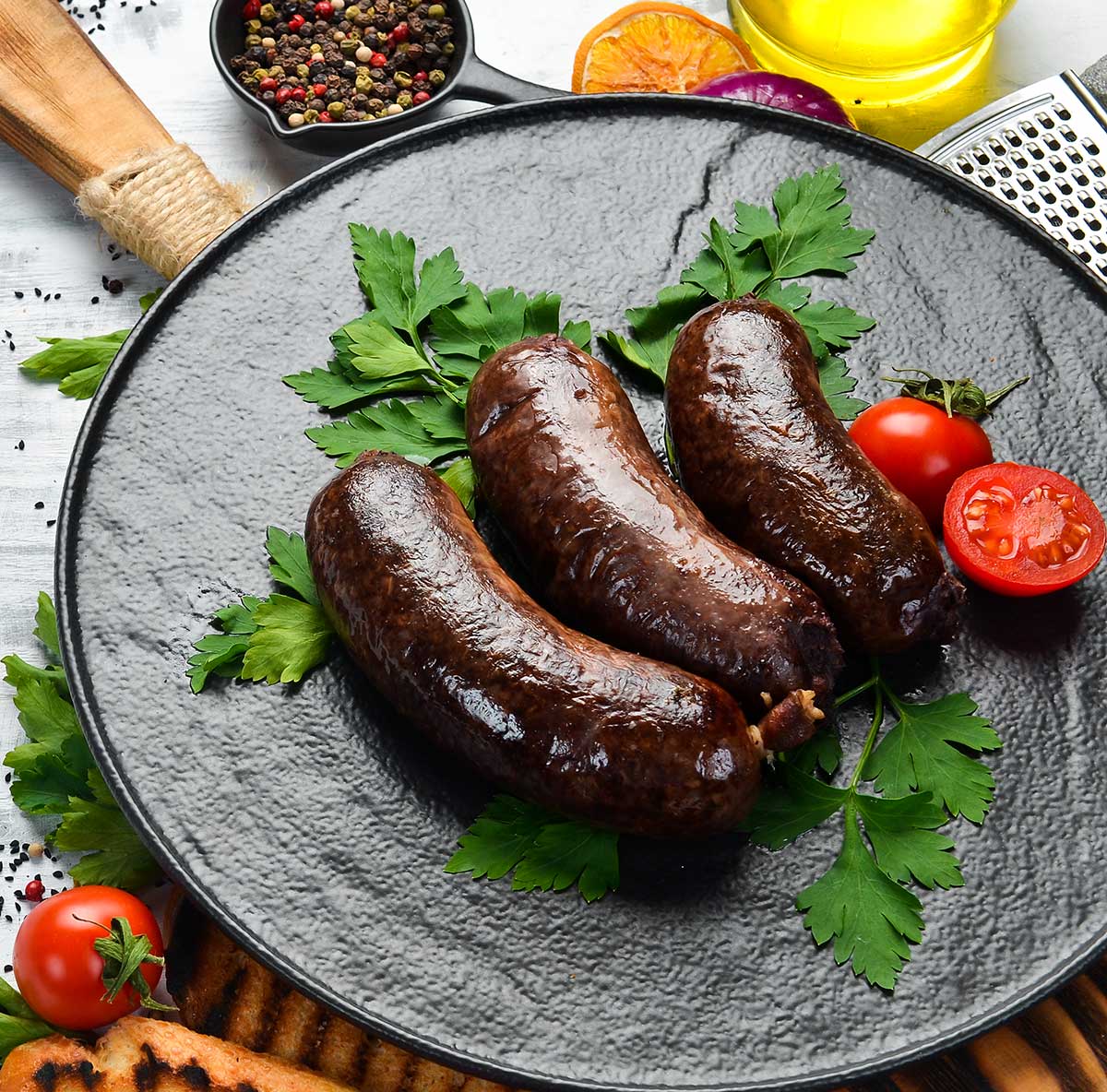
I’m from New Jersey, and much of what I learned about how to interact with others I learned from my stepfather Frank. Frank’s main rule was, “always have favors you can collect on, and don’t be afraid to do other people favors.” I do something for you, you return the favor — scratching each other’s back is a way of life. It’s how I roll.
So some years ago, when I drove down to Galt to collect a few hundred pounds of Touriga Nacional wine grapes from a Portuguese grower named Ron Silva, I wasn’t shocked when he told me not to worry about money. “No,” he said. “Instead, show me how to make blood sausage.” No problem, I said.
Blood sausage. Actually, Ron said “morcella.” I knew what he meant, although I refer to it mentally by its Spanish name morcilla. My neighbor from Argentina calls it more-SEE-zhuh, my other neighbor from Italy calls it sanguinaccio. Go to Louisiana or France and it’s boudin noir. But the first time I ate this odd delight was in South Africa, as part of a traditional English breakfast. And there it was stripped of any lyrical nicknames: The waiter called it “blood pudding.”
I know how to make blood sausage, but until I developed this recipe I had limited success. Many versions are blood and seasonings and that’s it — they are brutal to stuff into casings and were the source of failure whenever I’d been around the process in the past. Besides, to my palate, the blood-only sausages were a bit too cakey; more blood cake and less sausage. They have a weird mouthfeel.
I know. Many of you are saying to yourselves, blood. As an ingredient. In food that you’d eat. I know I glossed over it in the first few graphs of this post, but if you are still reading I thought I’d stop to tell you that first, there is quite a bit of nutrition in blood (especially iron and other minerals), and the addition of blood in a dish will make it seem fattier and richer than it really is.
(Pork blood also makes a great pasta, believe it or not!)
Pork blood will solidify and stay moist, while beef blood becomes crumbly and dry — one more reason why the pig is God’s Gift. And blood is cheap, so if you are on a budget think about it. Finally, blood is also a spectacular binder, much like egg whites. Herein lies the secret to my morcilla.
My blood sausage is bound with blood rather than a pure blood sausage. It has pork shoulder and pork fat, parsley, onions and lots of ground bay leaves.
I woke up early on a Saturday, drove down to the Davis farmer’s market and picked up some pork blood, as well as a big slab of pork shoulder. I was eager to repay Ron for the wine grapes — not because I wanted to get it over with, but because I enjoy the interplay of favors that my world once revolved around. This is a life bound more closely to other people than is that lived by those who follow the principle of “neither a borrower nor a lender be.”
I also enjoy teaching others some of the more esoteric things I’ve learned in my travels. (Thus this blog.)
Incidentally, when you want to make blood sausage yourself, you will find the blood in Asian markets, usually frozen. Or ask a local butcher to get it for you. It might take a week or so, but you can definitely buy pork blood in the United States.
When Ron and his wife Kathy arrived, I learned that Ron is a total morcella hound. “Morcella, morcella, morcella,” Kathy said. “When we were in the Azores, we’d go to Michelin-starred restaurants and he’d find the morcella.”
I think Ron was hoping I’d make more than five pounds, as he is a hearty eater. But all my recipes are about five pounds, and blood sausage is so rich non-farmers typically can’t eat too much at a sitting. But Ron was OK with it: I was teaching him to fish at the same time I was giving him some. At any rate, he watched the process intently.
Morcilla is an odd sausage to make. Instead of a solid bind that you want with a normal sausage, you pour in enough blood to make a loose slurry. It looks like the leftovers from a field hospital during the World War I.
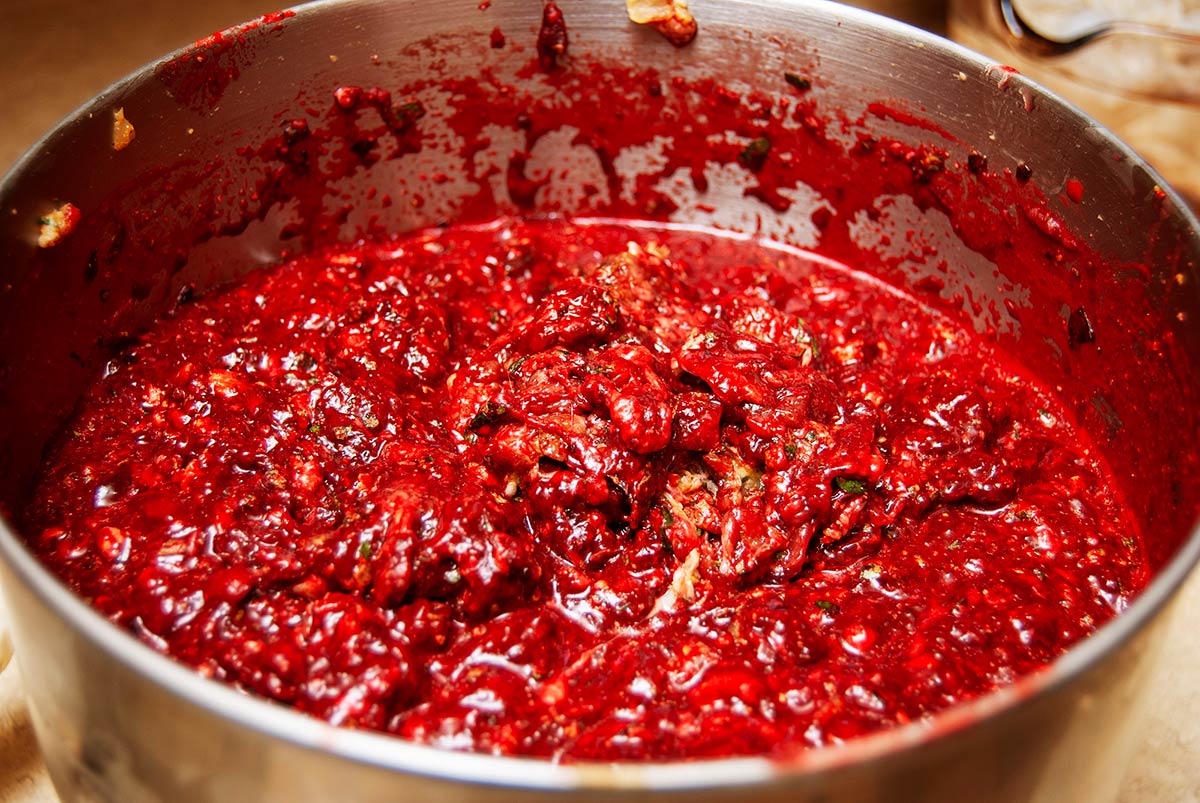
At least the slurry is solid enough that I can use a regular sausage-stuffer to form the links, although you must tie off those links with string; they are too loose to hold if you just twist them like a regular sausage.
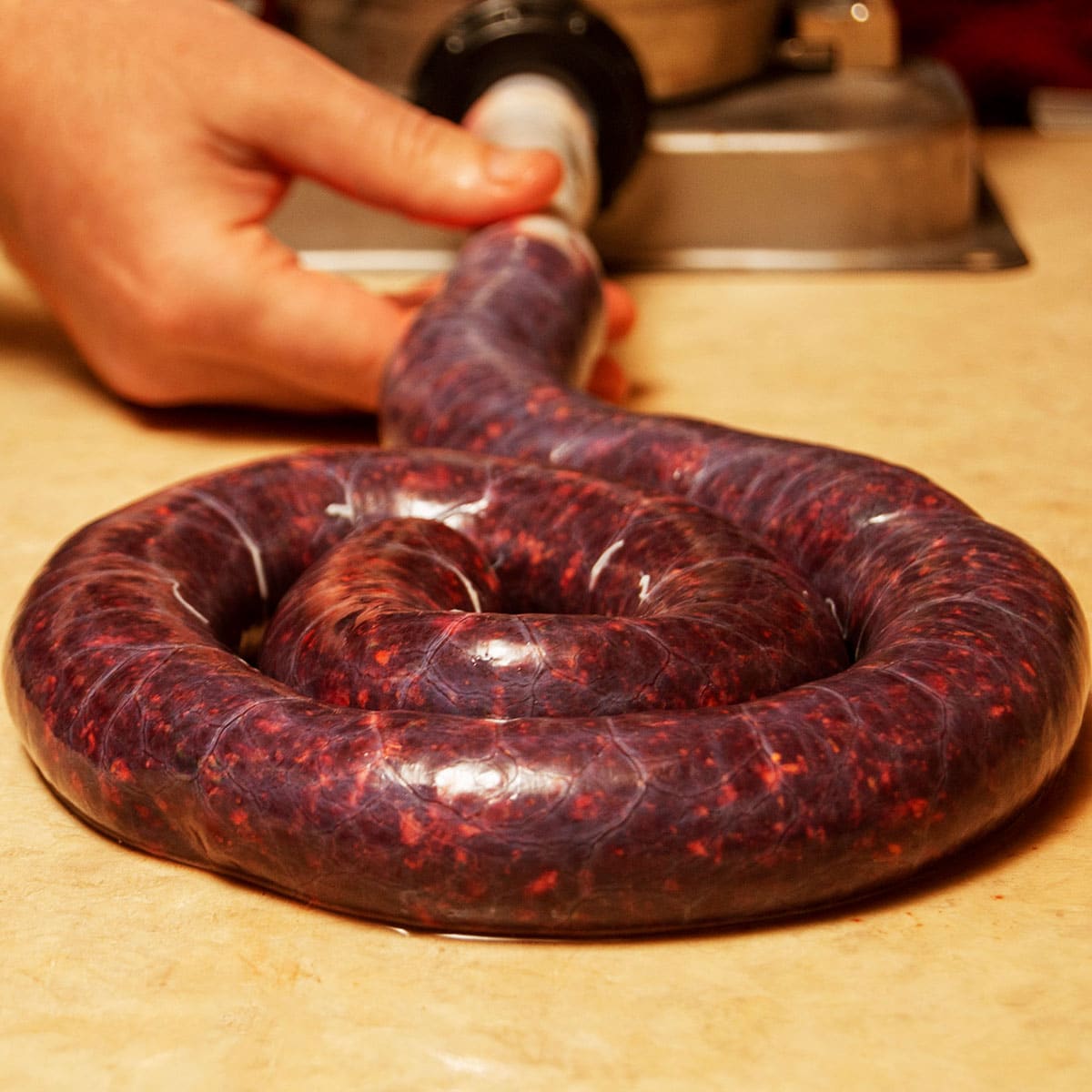
Another step you need to take is to poach the raw blood sausage in 170°F water. Not a simmer, and definitely not a boil (the blood will curdle. Ew.), but hot enough to solidify the blood to make a firm sausage.
After the poaching, you can then do what you want. I smoked mine over almond wood at 200°F for a couple hours, but you can then fry them, grill them, drop a few into a soup — whatever.
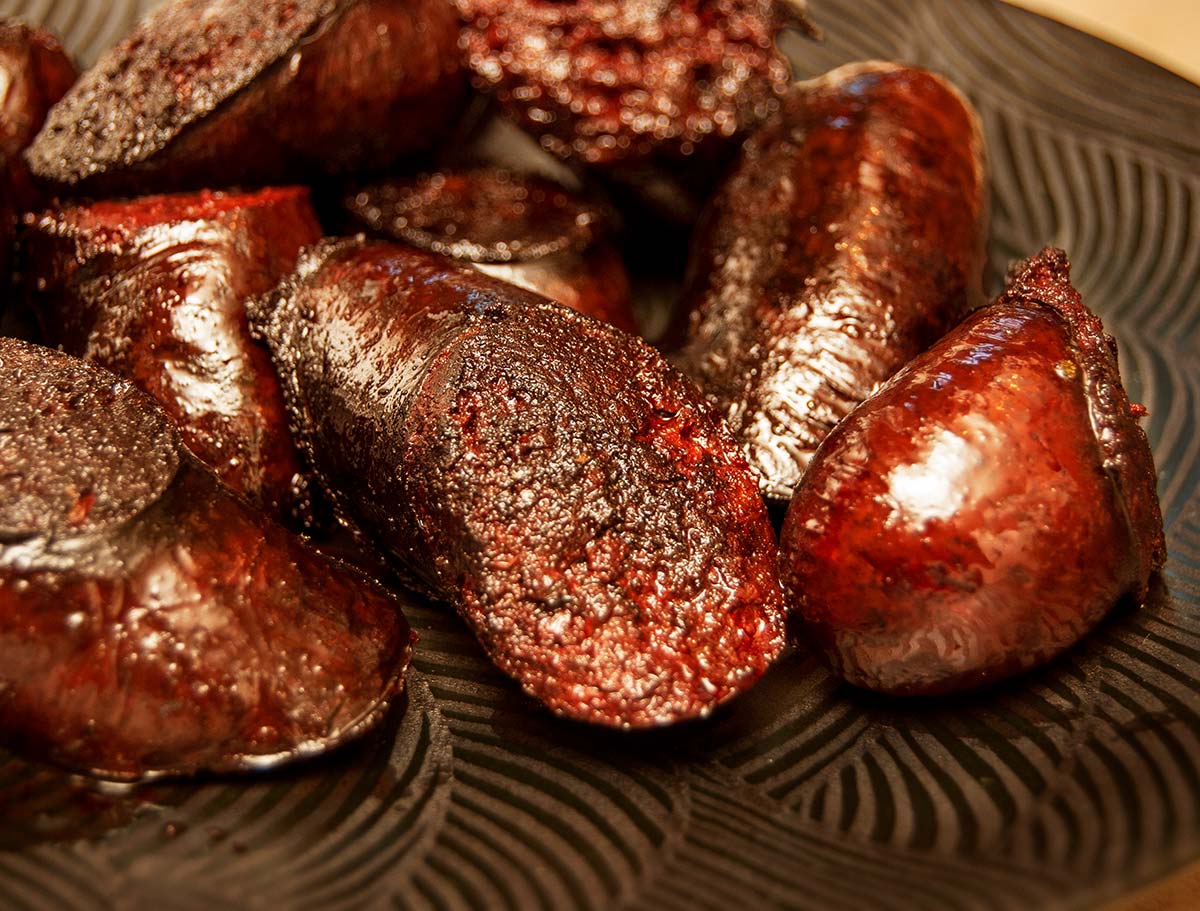
They are delicious: Softer than a regular sausage but still meaty, with a taste you can only really describe as “dark.” You know there is blood in there, but you can also pick up the pork and onions and the bay leaves. The fresh parsley brightens the whole affair enough that you don’t feel awkward eating them on a sunny day.
New to making sausage? You can find my detailed tutorial on how to make sausages at home here.
Portuguese Blood Sausage
Ingredients
- 1 quart pork blood (probably 1/2 gallon)
- 3 pounds pork shoulder
- 1/2 pound pork fat
- 2 cups chopped onions
- 1/4 cup duck fat or fresh lard
- 36 grams kosher salt, about 3 tablespoons
- 6 grams Instacure No. 1, about 1/4 teaspoon (optional)
- 10 grams freshly ground black pepper, about a tablespoon
- 6 grams ground bay leaves, about a tablespoon
- 1/2 cup minced parsley
- 3 tablespoons sweet paprika
Instructions
- Freeze the pork fat. Cook the chopped onions in the duck fat or lard over medium-low heat until they are caramelized, about 15 to 20 minutes. Remove and cool them. I do this step the day before.
- Mix both salts, and the pepper, parsley, bay leaves and paprika. Cut the pork and fat into chunks and coat everything with the spice mix.
- Chill everything: bowls, grinder parts, sausage stuffer parts, and especially the meat, fat and blood. I put everything in the freezer for a few hours. You are looking for temperatures close to freezing.
- Take the hog casings out and put what you need in a bowl of warm water. Depending on their width, you’ll need 10 to 20 feet worth. Many places sell casings specifically to make 5-pound batches. Be sure to drape the end of each casing over the side of the bowl so you can find it later.
- Using the coarse die (6.5 mm), grind the meat and fat. If you wish, you can run everything a second time through a fine die. I don't. Make sure the meat and fat are at no warmer than 35°F when you grind. Put the meat and fat into the freezer and clean up.
- Fill the largest pot you own with water and heat it to steaming, but not boiling. Ideally you want something like 170°F.
- Meanwhile, attach the paddle to your KitchenAid or other mixer, or, alternately, get a stout wooden spoon. Take the meat and fat mixture out and add the cooked onions. Pour in about a pint of blood. Stir on Level 1 on the mixer or with the wooden spoon. Add some more blood as you go; it’s not an exact science. You want a loose slurry that is quasi-emulsified — a consistency like pancake batter. When it is the consistency you want, put the mix back in the fridge and clean up. Get your sausage-stuffer ready and thread a hog casing onto it.
- Pour the mix into the sausage stuffer and begin making your sausages. Make the whole coil before you tie them into links. This is a little tricky, and it helps to have a second person help. You need to tie off blood sausage with twine because it is very loose inside and twisted links will fall out. Repeat until you are done with all the sausage. Get the largest bowl you own and fill it 2/3 of the way up with ice and water.
- If you have some wooden dowels, use them to gently lower the sausages into the pot of hot water. Do one at a time. Let the sausages poach for 15 minutes and then place them in the ice water. When the sausages are cool, remove them gently and hang them to dry out for an hour or so. You can now smoke them, or cook in any way you’d like.
Notes
Nutrition
Nutrition information is automatically calculated, so should only be used as an approximation.

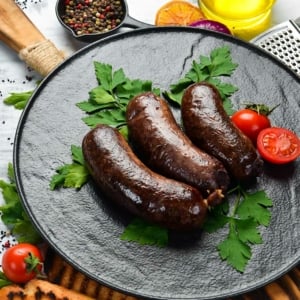

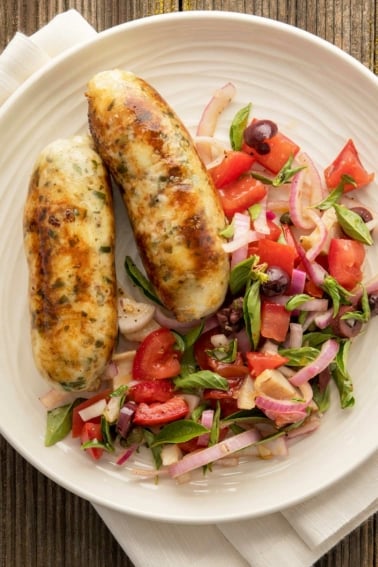
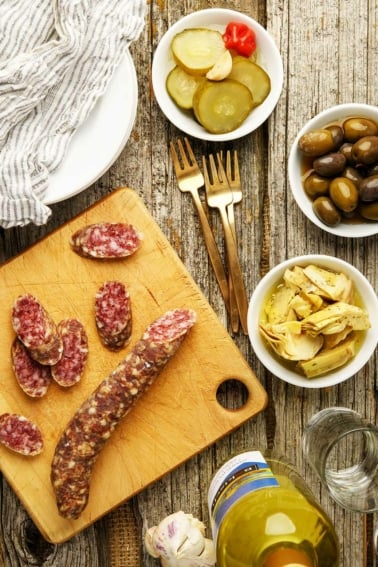

Hmmm black pudding. Had it for lunch today. One regional variant is that Irish version I normally eat has pinhead oatmeal in it. Yummy
SBW
I wasraised in Ireland and one of my favourite breakfasts was black pudding . I have never found it here. Some ingrediants I remember was pigs blood. barley and rusk( whatever that is). I shure would love to find an authentic recipe for Irish black pudding.Thanks, Brian
Really interesting post… as they all are. Love your blog!
This is one I have yet to try. I have to admit, when you mentioned the blood solidifying, I thought, “you mean like scabs do?” But the shot of the cooked (and comparatively brown) sausage looked quite appetizing.
ntsc, I must say that I’ve never heard of eating offal to get the girl! That is a new one on me.
I’ve never had blood sausage, but I”ll try it when I stumble across it one day! You always teach me new exciting things.
I’ve had it, and enjoyed it. As with some other food types the real incentive was the girl I was trying to get lucky with. This one actually was named Shelia. I got into sushi this was as well.
However this, as headcheese are on my wife’s ‘don’t even think about trying to make that. She does like head cheese to eat, but not blood sausage and wants nothing to do with making it.
That looks great! My first experience with blood was dinuguan.
A fantastic read — I enjoyed it top to bottom. My memory of blood sausage is singular, fleeting, and treasured. I was 21, living in Barcelona, a friend Francisco invited me home, to see how his parents lived on the very rural, very remote Delta del’Ebre in Catalunya.
https://commons.wikimedia.org/wiki/Parc_Natural_del_Delta_de_l'Ebre
Dad was a rice farmer (I’m guessing here…) and cooked an unforgettable Sunday meal of paella and fresh blood sausage. Nobody was talking about local or seasonal — it was just how they’d been eating on Sundays for generations. I only sort of got what a gift this was on so many levels. Youth is wasted on the young or something like that. But I did know that I loved every bite and that was enough.
Robin, that lunch looks fantastic! Thanks for sharing the photo.
I love black pudding, as it is known in the UK. Glorious stuff, and part of any Full Scottish (or English) breakfast.
It is fantastic with scallops, but you just can’t beat a ‘black pudding supper’ from a Scottish fish and chip shop. (A length of black pudding, covered in batter and deep-fried. Served with a portion of chips, liberally doused in malt vinegar.) And now I feel homesick!
In the Netherlands some of us still eat “bloedworst” for lunch. The sausages are much bigger in diameter and you panfry a slice on both sides and eat it on top of a slice of bread. I like to add a panfried/caramelized sliceof apple. Here’s a picture: https://www.flickr.com/photos/fotoosvanrobin/324823198/
I can still buy this in our regular supermarket but I think it’s only old and bold people who eat it. It is bound to get extinct.
We make morcilla , but not in the casing. we use the pigs stomach. We cut small pieces of pork liver, some meat, add garlic , cumin, salt pepper, oregano, and sage to the blood,. it is then put inside a cleaned pork stomach. The openings are sewed together. It is then placed in a pan with water to cover and cooked over low heat for 1.5 hours. It is wonderful and sooo good. we only do it around xmas time when the boys butcher a hog.
Hank,
I’m so sorry I don’t like blood pudding, but your post is so interesting! That’s why i keep coming back 🙂
not sure how i got here but this post mesmerized me…
i’d love to try this sometime. it’s on my list…
An Irish breakfast is a staple in duck camp. Fried eggs, fried potatoes, fried tomato, rashers, bangers, and don’t forget the black and white puddings. I love me some black puddings!! Most of my buddies get the weird puckered look on their face when I tell them what a “pudding” is (only because they ask).
Believe it or not, I pick up my supplies at a local 7-11 that was once owned by a British ex-pat. He told the new owner that the only condition of sale was to continue with the British goods for all the other ex-pats. Only a few proper pubs have an Irish breakfast on their menu.
I first had blood sausage by accident at a Heuriger in Vienna, Austria. The owners had put out a buffet, and I was sampling everything. After enjoying the sample, someone pointed out to me just what I had eaten. They were rather surprised that I went back for seconds anyway.
Love it! I’ve only had it in a breakfast setting…with eggs and hash browns. Can’t wait to try this one out.
“This is a life bound more closely to other people than is that lived by those who follow the principle of ‘neither a borrower nor a lender be.’ Sorry Ben, I just don’t agree, at least when it doesn’t involve money.”
Good call. People forget that that oft-recited quotation came from the lips of Polonius, arguably the fool of Hamlet, amidst a stream of other mediocre advice.
I love blood sausage for breakfast with a few runny eggs (yolk=sauce). Have never made my own, but just might now…
Hank, the final product looks fab! Thanks for sharing, I do like Morcilla.